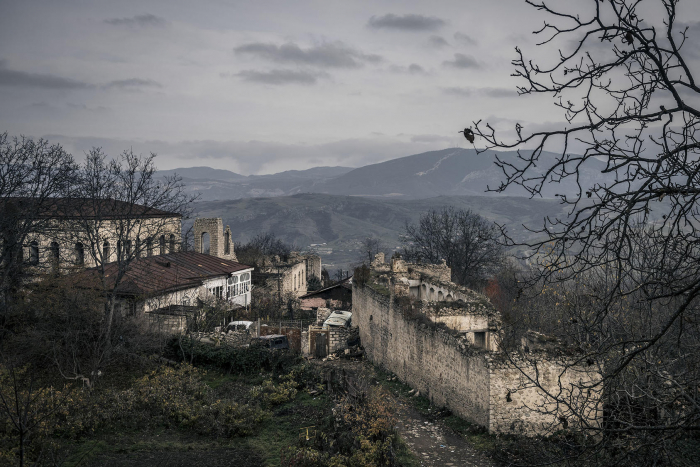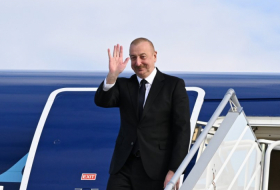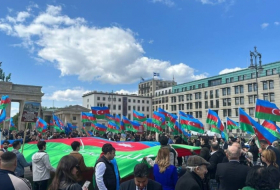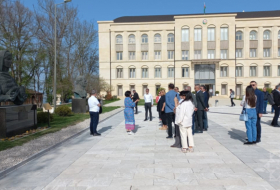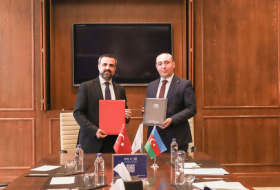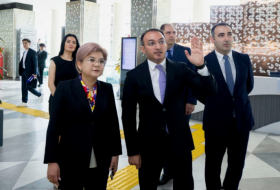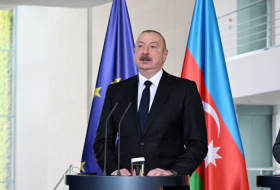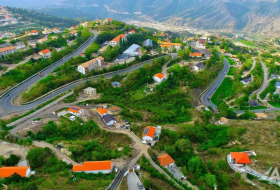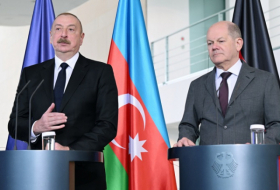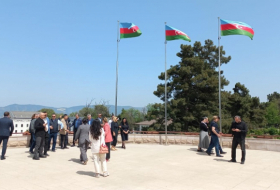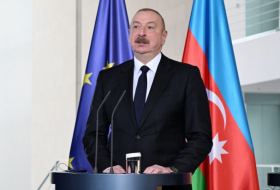When talking about the events that will go down in history under the name of the Armenian-Azerbaijani conflict over Nagorno-Karabakh, it is necessary to pay attention to the settlement of Armenians in Azerbaijan.
Historical facts show that Armenians did not live in Azerbaijan until the 19th century. Armenia's position weakened during the Russia-Turkey and Russia-Iran wars. Russia was seriously concerned about the existence of a Muslim and Turkish country on its southern border. Moscow started the settlement of Armenians in northern Azerbaijan. Following the signing of the Treaty of Gulistan (1813) and the Treaty of Turkmenchay (1828), the process of resettlement of Armenians to the territories of Azerbaijan became widespread. During this period, 86,000 Armenians from Turkey and 40,000 from Iran were relocated to the lands of Western Azerbaijan, which is now under the control of Armenia. Armenians were mainly settled in the territories of Karabakh, Nakhchivan, and Iravan khanates. Attempts to divide Azerbaijan continued, and an Armenian province was established here.
About 200 years ago, the Russian tsar signed a decree on the resettlement of some Armenians to Derbent and Guba. The decree, entitled "On the Privileges and Right of Free Movement of Armenians in Derbent and Mushkir", gave Armenians a wide range of rights and stressed the need to relocate them to fertile lands to improve their living conditions. In 1723, Russian Tsar Peter I signed a decree on September 12 to allocate definite places for the settlement of Armenians in Baku, Derbent, and Guba.
In 1726, Catherine II issued a decree underlining the need to show special mercy and protection to the Armenians. In 1729, by order of the Russian tsar, a group of Armenian monarchs was granted Russian citizenship. In 1799, Tsar Paul I instructed the Kartli-Kakheti kingdom to help settle Armenians in Gazakh. The resettlement of Armenians to the territories of Azerbaijan was reflected not only in separate decrees and instructions but also in interstate agreements. The Turkmenchay peace treaty signed between Russia and Iran in 1828 included a clause giving the Armenians living in Iran the right to freely enter Russian territory.
That created the basis for the migration of Armenians to the territories of Azerbaijan. After the Turkish-Russian war in 1828-1829, an agreement was reached to resettle the Armenians in Turkey to the territories of Azerbaijan. To speed up the implementation of this, a special committee was established in Russia, and general rules covering 12 articles were defined. This policy, referring to Peter's will, mainly aimed to create a shield against possible threats from the south by an ethnic division of the territory of Azerbaijan and the settlement of Christian peoples here. Thus, Armenians were gradually settled in the territories of Azerbaijan, and good conditions were created for them here and fertile lands were allocated. Russian historian - Chopin stated, at the beginning of the 19th century, 2,400 Azerbaijani families and 12,000 Azerbaijanis lived in Yerevan. Although part of the population moved to Iran after the capture of the city by Russia, Azerbaijanis still made up the vast majority of the people. Thus, according to the data of 1829, in Yerevan alone, four-fifths or 80 per cent of the population were Azerbaijanis. According to the first census of the population in the Russian Empire, 313,178 Azerbaijanis lived in Western Azerbaijan - in Iravan in 1897. But a few years later, those numbers changed. After the Armenians settled in our territories, they began to think about creating their state. As a result, mass acts of genocide were committed by Armenians in Azerbaijan in 1905-1906. During these years, they massacred Azerbaijanis and committed horrible crimes in Baku, Tbilisi, Yerevan, Nakhchivan, Ganja, Karabakh, and Zangazur. Historical sources confirm that during these events, the Armenians destroyed 75 Azerbaijani villages in Zangazur, Shusha, Javanshir, and Jabrayil, and destroyed more than 200 settlements in Yerevan and Ganja provinces. Since the establishment of a republic “without a capital”, Armenian chauvinists committed massacres in Loru-Pembek and Shorayel districts, Zangazur, Goycha, and other places, where Azerbaijanis made up the majority of the population. The facts show that in 1918-1920 when the Republic of Armenia was ruled by strong nationalists, they were able to implement the slogan "Armenia without Turks".
As a result of the atrocities committed against Azerbaijanis at that time, 565,000 of the 575,000 Azerbaijanis living in present-day Armenia were killed or forcibly expelled from their homes. In March-April 1918, more than 150 villages in the mountainous areas of Karabakh, in Baku were destroyed. The operations carried out by Armenians in these villages were one of the most brutal events in history due to its tragic scale. Armenians savagely destroyed 115 villages in Zangazur district by the same methods, looted and burned 211 villages in Iravan province and 92 in Kars. During the 70 years of Soviet rule, Armenians claimed new territories.
One of the nefarious intentions of the Armenian lobby, which has established in the state administration in Moscow, was to pursue deportation policy against Azerbaijanis at the state level with Stalin's blessing under the pretext of accommodating Armenians coming from abroad after the war. The Armenians, who owned the Zangazur region of Azerbaijan in 1920, wanted to annex Nagorno-Karabakh to Armenia in 1921. In July 1923, they managed to grant autonomy to Nagorno-Karabakh. However, they did not give up their claim for possession of Nagorno-Karabakh and repeatedly raised the issue. Even during their stay in the Soviet Union, there was open discrimination against Azerbaijan.
Staying true to the legacies of its predecessors, the leadership of the Soviet Empire presented the Armenians as an oppressed and poor people, gave serious support for their revival, and the economic and political development of Armenia, and made efforts to unite the territories of Azerbaijan with this republic. That was one of the main Soviet policies in the South Caucasus during the reigns of both Lenin and Stalin. In November 1945, the first secretary of the Central Committee of the Communist Party of Armenia G. Arutyunov I. Addressed a letter to Stalin, raising the issue of annexation of Nagorno-Karabakh to the Armenian SSR, claiming that Nagorno-Karabakh borders the Armenian SSR and is allegedly closely linked to its economy. I. Stalin addresses that letter to K. Malenkov. In turn, he sent the document to the leadership of the Azerbaijani SSR for a response. Giving detailed information about the history and ancient land of Azerbaijan, M.J. Bagirov mentioned in the letter that Azerbaijan does not object to the proposal, except for Shusha, provided that the territories in the Armenian SSR, Georgian SSR, and Dagestan ASSR, which were inhabited by Azerbaijanis, bordered Azerbaijan and were historically an integral part of Azerbaijan should also be returned to Azerbaijan. In this case, the Armenians resorted to another trick to resettle Azerbaijanis living in Armenia and mainly in the regions bordering Azerbaijan. Furthermore, on the pretext of providing a labour force for the cotton-growing lands of the Mugan-Milsk steppe in the Azerbaijani SSR, the resettlement of Azerbaijanis from the territory of the Armenian SSR had been carried out to settle the vacated lands with Armenians coming from abroad. The archives of political parties preserve a copy of the letter signed by M.J. Bagirov and G. Arutyunov in December 1947 and sent to Stalin in connection with this issue. The letter contains specific proposals on the above issues. Consequently, on December 23, 1947, the Council of Ministers of the USSR adopted Decision No. 4083 on resettling collective farm workers and other members of the Azerbaijani population from the Armenian SSR to the Kura-Araz lowlands of the Azerbaijan SSR.
It is no coincidence that on March 10, 1948, the USSR Council of Ministers had to make another decision in addition to the previous one. Including an additional note in the decision of December 23, 1947, this second decision, signed by Stalin, contained an action plan for the resettlement of Azerbaijanis. Resolutions of the USSR Council of Ministers No. 4083 of December 23, 1947, and No. 754 of March 10, 1948, were another historic criminal act against the Azerbaijani people. Based on these decisions, in 1948-1953, more than one hundred and fifty thousand Azerbaijanis were deported from their ancestral lands in the territory of the Armenian SSR.
Unfortunately, the fact of deportation of Azerbaijanis from the territory of the Armenian SSR in 1948-1953 has not been properly investigated for the past 50 years, and these events have not been given a legal and political assessment. The first sentences of the decree of the President of the Republic of Azerbaijan "On the mass deportation of Azerbaijanis from the historical and ethnic lands of the Armenian SSR in 1948-1953" dated December 18, 1997, begin as follows: “As a result of the purposeful policy of ethnic cleansing against Azerbaijanis in the Caucasus over the past two centuries, our people have suffered severe deprivation. Due to such inhumane policy pursued in stages, Azerbaijanis have been expelled from the territory now called Armenia - their native historical and ethnic lands where they lived for thousands of years, subjected to massacres, and thousands of historical and cultural monuments, settlements belonging to our people were destroyed."
Historical facts completely confirm the undoubted truth that the territory now called Armenia was a Turkic land - the territory inhabited by Azerbaijanis until the 19th century. As it is known, when the "Republic of Armenia" was declared on May 27, 1918, there was no capital of this so-called state, and the National Council of Azerbaijan recognized Yerevan as the capital of the Republic of Armenia by a majority vote on May 29, 1918. Although there were no Azerbaijanis left in the provinces of West Azerbaijan - Zangibasar, Vedibasar, Zangazur, Goycha, Agbaba, Darachichek, Sisyan, Gafan, Gamarli, Garagoyunlu, Girkhbulag, Sharur, Surmali, Seyidli, Sardarabad, Abarasan, and others, that were once populated mainly by Azerbaijanis, those were engraved in the memory of history as the ancient lands of Azerbaijan. In the late 1960s and early 1970s, the issue of annexing the Nagorno-Karabakh Autonomous Region to the Armenian SSR became one of the issues discussed even in the Kremlin and in the Political Bureau.
With the help of their patrons, the Armenians continued their efforts to unite the territories of Azerbaijan with Armenia. In May 1969, the Supreme Soviet of Armenia decided to annex some villages in Gazakh and several other regions. The Supreme Soviet of the USSR approved this decision. However, as Heydar Aliyev was elected the first secretary of the Central Committee of the Communist Party of the Azerbaijan SSR, he did not allow the implementation of this decision. In a huge country like the USSR, it is not hards to understand what the failure in the implementation of the decision of the legislature means. Heydar Aliyev took a big risk for the national interests of his people and prevented the annexation of Azerbaijani lands to Armenia. However, in 1986, due to the negligence of the Azerbaijani leadership, some of the territories specified in the decision were annexed to Armenia. In 1977, the commission that drafted the new Constitution of the Soviet Union proposed that the Nagorno-Karabakh Autonomous Region be separated from the Azerbaijani SSR and merged with the Armenian SSR. The harsh reaction of Heydar Aliyev, the First Secretary of the Central Committee of the Communist Party of Azerbaijan, which represented the republic in the commission, and his firm rejection of this proposal prevented its implementation. Touching upon this issue during the discussions in the Azerbaijani parliament in 2001, the national leader said: "When the USSR Constitution was adopted in 1977, a commission was set up to draft the constitution. The commission was headed by the then Secretary-General of the Communist Party Brezhnev and representatives of the republics. I was also a member of this commission. When the commission drafted the project, for about a year, there were too many proposals that Nagorno-Karabakh should be separated and handed over to Armenia. There were even a couple of attempts to consider this issue in the commission. I'm telling you what happened. At that time, I prevented it although it was difficult. But I did. I prevented it with my will and by protecting the national interests of the Azerbaijani people.”
In 1985, Mikhail Gorbachev, who was elected General Secretary of the Central Committee of the Communist Party of the Soviet Union, did his best to realize this heinous intention. As Gorbachev came to power, the Armenians gained political patronage and tried to make the most of this opportunity. The removal of Heydar Aliyev from the Political Bureau and the post of First Deputy Chairman of the Council of Ministers in 1987 can be considered as the logical end of these attempts. Since 1988, Armenians began to openly pursue a policy of hostility towards Azerbaijan. The escalation of the conflict with the killing of two Azerbaijanis in Karabakh and the destruction of the Topkhana forest, and the subsequent ongoing military operations, once again demonstrated the seriousness of the problem. The geography of the conflict expanded day by day, and in 1989 the Supreme Soviet of the Armenian SSR decided on the annexation of Nagorno-Karabakh to this country without any legal basis. This meant the annexation of Azerbaijani territories.
Armenians had already turned the tactics of struggle to the level of military aggression, and in Azerbaijan, the weakness of the political authorities and mass protests were not able to change the course of events. Thus, in 1988-1991 and 1991-1993, taking advantage of the weakness of political power in Azerbaijan and the chaos within the country as a result of power struggles, Armenia, through its patrons, occupied 20 per cent of the territory of our country, whose territorial integrity was de jure recognized by the UN. As a result of the conflict, more than one million Azerbaijanis were displaced from Armenia and Karabakh.
The war started by the Armenian armed forces ended up with a ceasefire in May 1994. Later, the OSCE Minsk Group was established to resolve the conflict through peaceful negotiations based on OSCE principles. However, for more than 30 years, hundreds of civilians have been killed as a result of large-scale shelling of Azerbaijani settlements by Armenian forces, which have repeatedly violated the ceasefire. On September 27, 2020, the Armenian armed forces once again violated the ceasefire and attacked Azerbaijan, targeting military facilities and civilians to occupy new territories. This is an act of violation of international law and the next military aggression and use of force by Armenia against Azerbaijan. The next military provocation of the Armenian leadership once again proved that it is an enemy of peace and security in the region. Ignoring the numerous resolutions and calls of the UN Security Council and various international organizations on the liberation of the occupied Azerbaijani lands, Armenia became the greatest threat to peace and security not only in the South Caucasus but also around the world. Unfortunately, the military aggression of aggressor Armenia against Azerbaijan in the Tovuz region in July 2020 was condemned by international organizations, especially the UN Security Council, the OSCE Minsk Group co-chairs, Human Rights Watch, Amnesty International, Freedom House, and others, and the aggressor had been adequately punished, we would not have witnessed another Armenian aggression.
More about:








